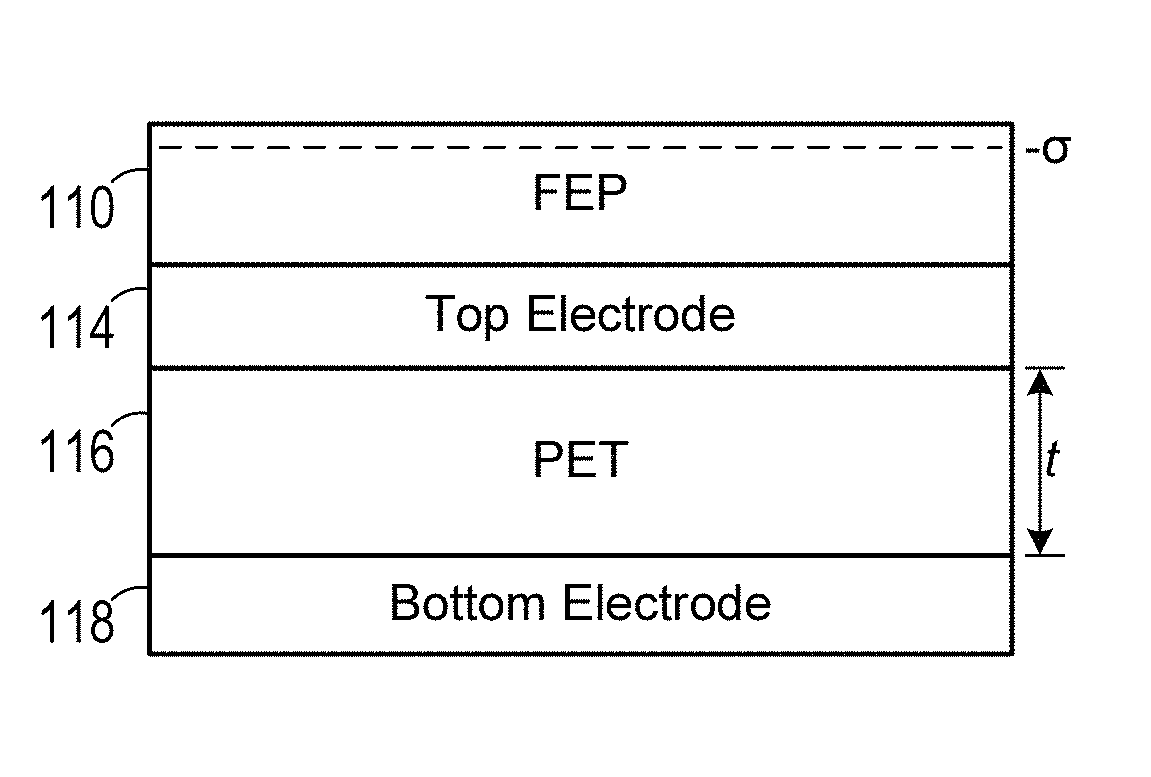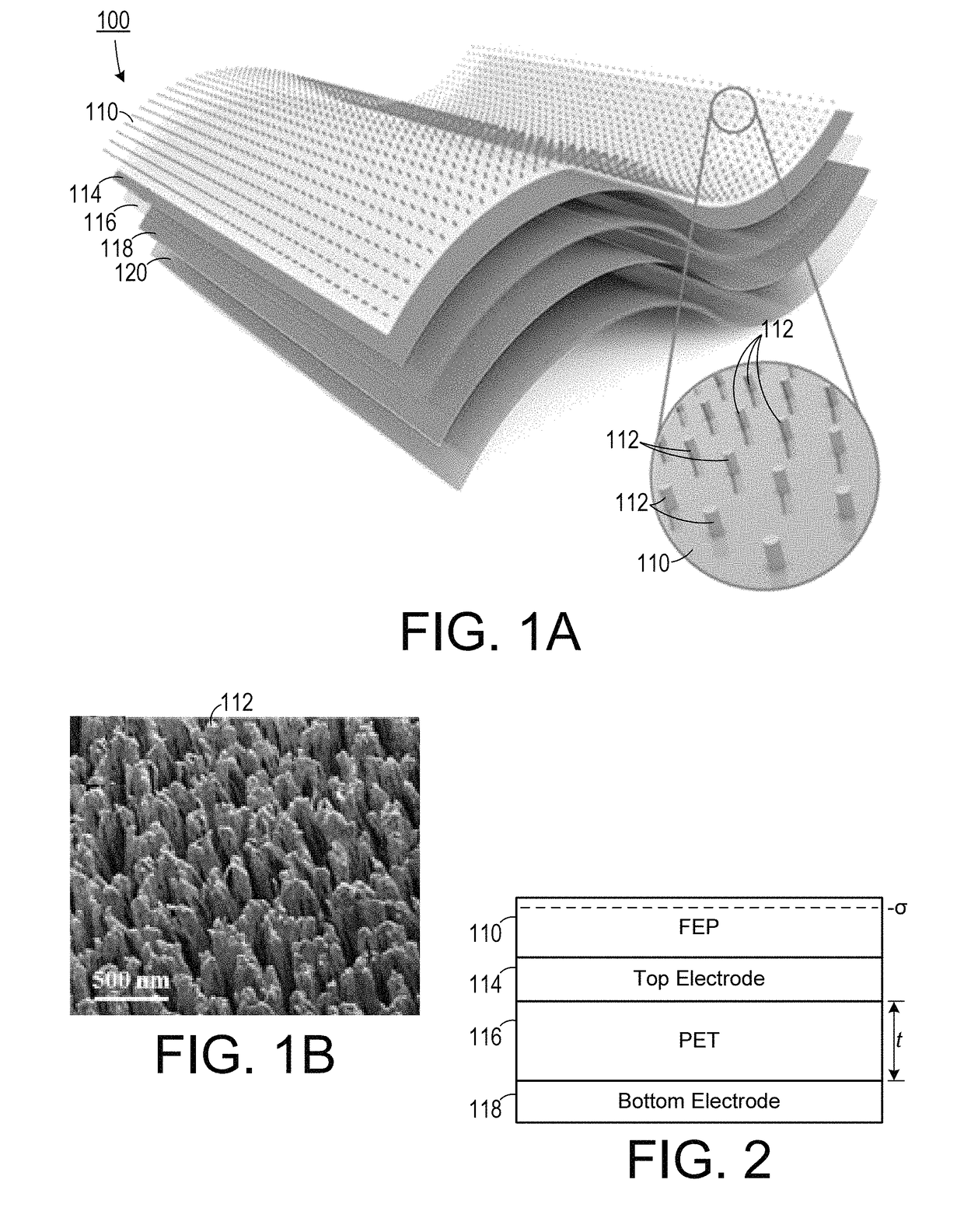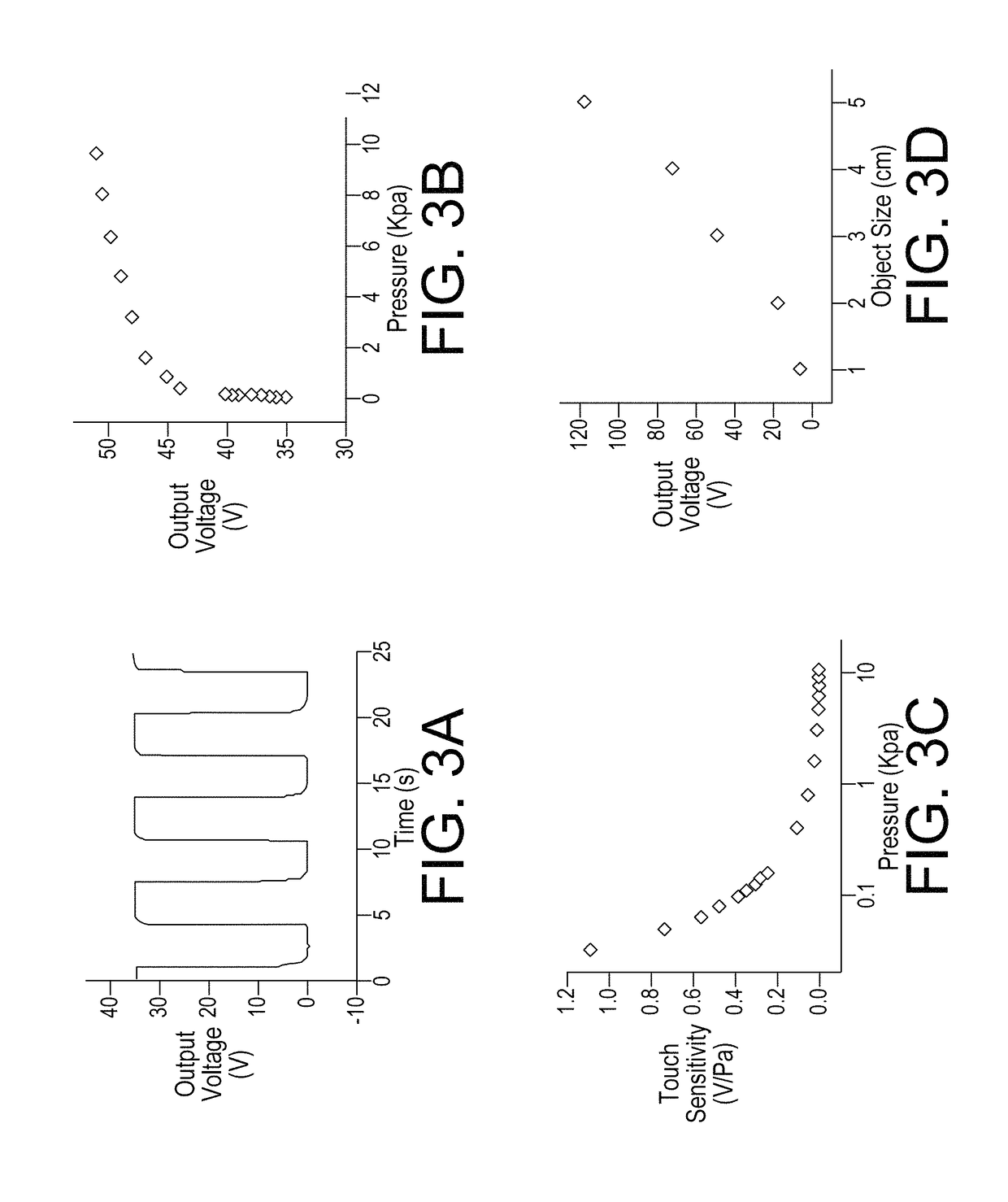Self-powered, ultra-sensitive, flexible tactile sensors based on contact electrification
a tactile sensor and contact electrification technology, applied in the field of touch sensors, can solve the problems of power consumption and structural complexity, deformation dependence poses a challenge, and none of them can normally opera
- Summary
- Abstract
- Description
- Claims
- Application Information
AI Technical Summary
Benefits of technology
Problems solved by technology
Method used
Image
Examples
Embodiment Construction
[0022]A preferred embodiment of the invention is now described in detail. Referring to the drawings, like numbers indicate like parts throughout the views. Unless otherwise specifically indicated in the disclosure that follows, the drawings are not necessarily drawn to scale. As used in the description herein and throughout the claims, the following terms take the meanings explicitly associated herein, unless the context clearly dictates otherwise: the meaning of “a,”“an,” and “the” includes plural reference, the meaning of “in” includes “in” and “on.”
[0023]U.S. patent application Ser. No. 13 / 598,132, filed on Aug. 29, 2012 by Wang et al. and published as US-2013-0049531-A1 and U.S. patent application Ser. No. 14 / 189,656, filed on Aug. 25, 2014 by Wang et al. and published as US-2014-0246950-A1 each disclose methods of fabricating and operation of triboelectric generators and are therefore incorporated herein by reference.
[0024]As shown in FIGS. 1A-1B and FIG. 2, one embodiment of s...
PUM
 Login to View More
Login to View More Abstract
Description
Claims
Application Information
 Login to View More
Login to View More - R&D
- Intellectual Property
- Life Sciences
- Materials
- Tech Scout
- Unparalleled Data Quality
- Higher Quality Content
- 60% Fewer Hallucinations
Browse by: Latest US Patents, China's latest patents, Technical Efficacy Thesaurus, Application Domain, Technology Topic, Popular Technical Reports.
© 2025 PatSnap. All rights reserved.Legal|Privacy policy|Modern Slavery Act Transparency Statement|Sitemap|About US| Contact US: help@patsnap.com



